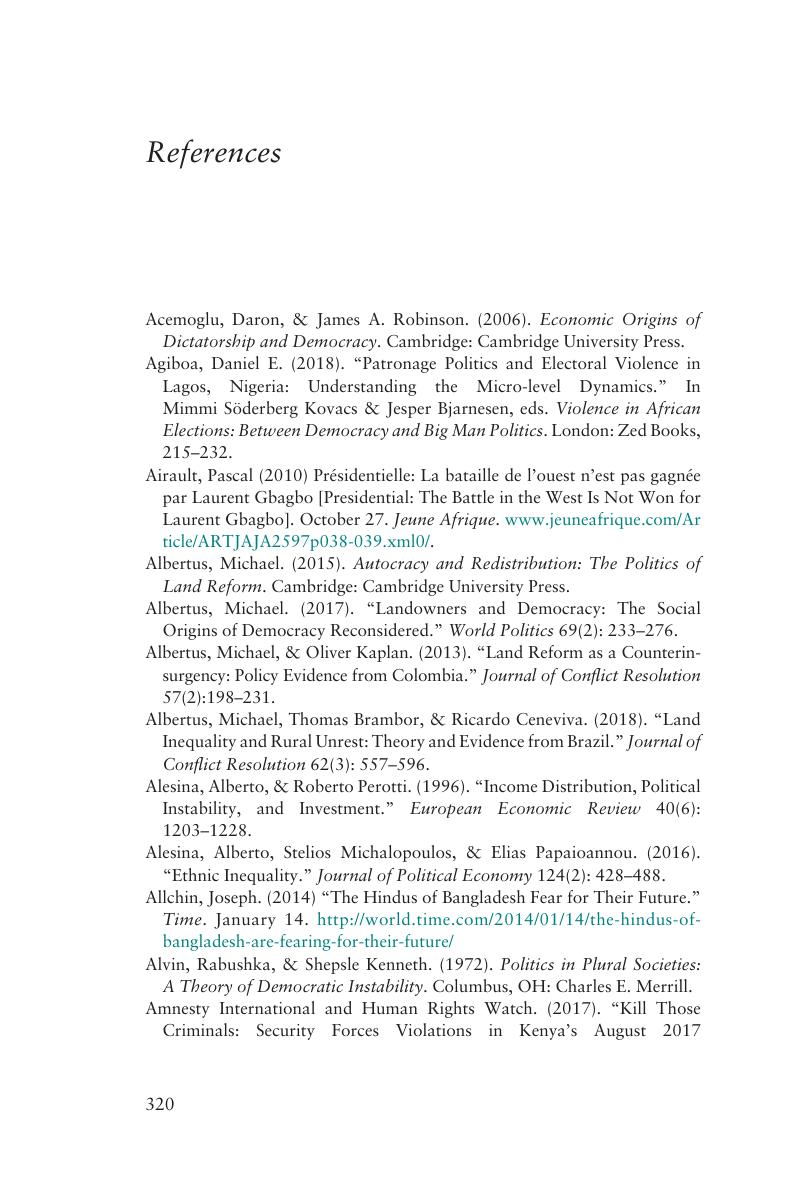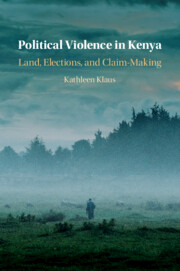Book contents
- Political Violence in Kenya
- Political Violence in Kenya
- Copyright page
- Dedication
- Contents
- Figures
- Maps
- Tables
- Acknowledgments
- Abbreviations
- 1 Introduction
- 2 A Theory of Land and Electoral Violence
- 3 Historical Origins of Electoral Violence
- Part I Determinants of Contentious Land Narratives
- Part II Determinants of Election Violence
- Part III Consequences of Electoral Violence
- Book part
- References
- Index
- References
References
Published online by Cambridge University Press: 14 May 2020
- Political Violence in Kenya
- Political Violence in Kenya
- Copyright page
- Dedication
- Contents
- Figures
- Maps
- Tables
- Acknowledgments
- Abbreviations
- 1 Introduction
- 2 A Theory of Land and Electoral Violence
- 3 Historical Origins of Electoral Violence
- Part I Determinants of Contentious Land Narratives
- Part II Determinants of Election Violence
- Part III Consequences of Electoral Violence
- Book part
- References
- Index
- References
Summary

- Type
- Chapter
- Information
- Political Violence in KenyaLand, Elections, and Claim-Making, pp. 320 - 345Publisher: Cambridge University PressPrint publication year: 2020



